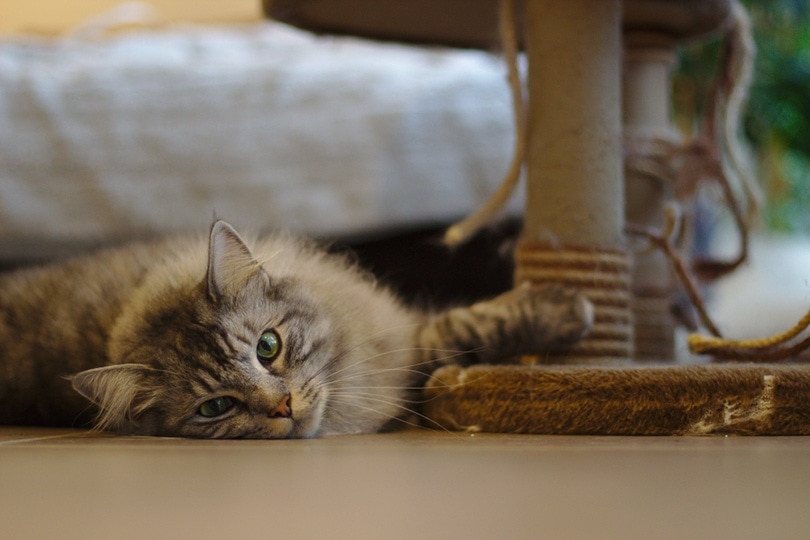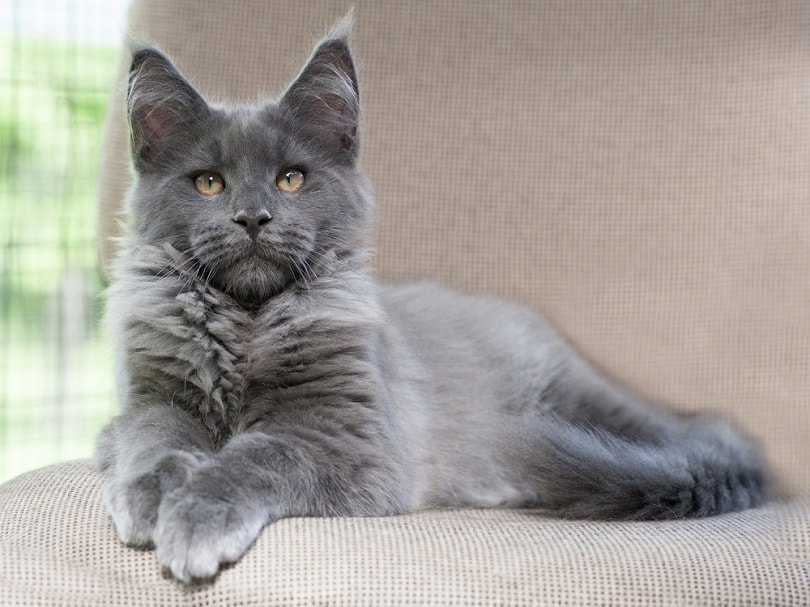Cats scratching on furniture comes with the territory of owning a cat. Of course, not all cats use furniture to dig their claws into something, but that’s because they have been redirected to a more appropriate surface and have learned which things in the house are okay to scratch and which ones aren’t.
Scratching is an extremely common and normal behavior for all cats. Even cats out in the wild scratch their claws against hard surfaces for numerous different reasons. Even though you love your pets dearly, you don’t always love that they destroy your beautiful, and probably expensive, furniture. Declawing is not the answer. Instead, there are many other ways for you to change this behavior and redirect them to something a bit more appropriate.
Why Do Cats Scratch Things?
There are a handful of different reasons why your cats are scratching on every surface in the house. Let’s dig into some of the most common ones.

Marking Territory
Regardless of their age or breed, all cats are territorial animals. Scratching allows them to stake their claim on items around the house and let others know that they’re in someone else’s territory. Cats usually scratch on doorways, windowsills, litter boxes, furniture, carpeting, and other items around the house. The scratching then leaves everything covered in claw marks.
Even though the claw marks are ugly, the act of scratching leaves a scent behind. Cats have scent glands in their paw pads that release pheromones, which allow other animals to smell the scent, see the marks, and know that a specific individual is claiming the space as his own.
Cats that live with other animals sometimes feel more compelled to scratch things than cats that live alone. If you bring home a new cat, avoid this response by introducing them to a designated cat scratcher that they can dig their claws into.
Stretching
What do stretching and scratching have to do with each other? You’ve probably noticed that your cats stretch multiple times throughout the day. If you pay even closer attention to their bodies, you’ll see that they often stretch out every part of their body, including their claws. They sometimes get caught on whatever item just happens to be nearby while they do this. Again, putting a few scratching posts around the house or near their favorite napping spot is an easy way to encourage them to do so away from your furniture.

Keeping Claws Healthy
Scratching is actually one of the few ways that cats can keep their claws healthy. Cat claws are made of keratin like our fingernails. However, unlike human nails, claws have several layers to them. Scratching allows cats to peel off older layers and expose a newer, shinier claw that was underneath. They are also much sharper and will help your cat hunt, catch, and kill prey if they’re an avid mouse hunter. If they’re not, then it just makes it even more believable for them that they’re killing their favorite toy.
How to Redirect Cats that Scratch
The last thing anyone wants is for their expensive leather couch to look like it went through a woodchipper. Your cat isn’t destroying your furniture on purpose. Understand that scratching is an instinct for them and something that all felines do. If you want the behavior to stop, you have to redirect them to something else.
Start by understanding that your cat feels connected to you and, by scratching, they are staking their claim on you and your belongings. If you have multiple cats in the house, they may be even more inclined to claw up your belongings. The trick to redirecting them is to offer multiple scratching pads or posts around the house. When they start to lift their paws to scratch your furniture, move them away and set them near the designated scratching surface to help them learn. You can also entice them to use it by sprinkling catnip on the poles. Whenever you catch them using the appropriate surface, reward them with lots of praise and maybe even a few treats.

Other Ways to Deter a Cat from Scratching
Removing Temptations
Transitioning to a scratching post could take some time. Cats don’t enjoy too much change, so have some patience and wait for them to get used to the new arrangements. Ideally, you could even store the targeted items in a room that is off-limits to them until they are focused on the new scratching post.
Deterrent Sprays
It’s not always possible to take your furniture out of the room. You can, however, make your belongings less appealing. Head to your nearest pet supply shop and pick up some deterrent spray to use on your upholstery items. These are off-putting to most cats but still pleasant for humans.
Other Deterrents
Cat owners are always finding creative ways to deter their cats. Some of the most popular choices are double-sided tape and aluminum foil. If it’s a vertical surface, sticking double-sided tape on them is one of the best ways to keep them away. Cats hate the sticky feeling and will look elsewhere for things to scratch on. This is when having a cat scratching post nearby is helpful.
Lay out some aluminum foil if they are scratching on horizontal surfaces. The moment your cat touches the foil, it makes a loud noise and scares them away. The cats quickly learn that they’ll have to find somewhere else to use their claws.

Should You Declaw Cats?
In the past, declawing cats was a common practice that many people took advantage of. We now understand that this is an invasive surgical procedure that is not only unnecessary but cruel. The part of your cat’s paw that gets amputated is crucial for normal functions and won’t even get rid of their instinct to scratch. Why take them through this painful procedure at all when there are far better and safer ways to correct eh behavior?
Conclusion
You’re never going to be able to get rid of a cat’s instincts to scratch. This behavior serves many different purposes and has aided in their health and survival for hundreds of years. You can encourage these natural behaviors in ways that are beneficial for them while still keeping your furniture and other belonging protected.
Featured Image Credit: AllNikArt, Shutterstock






